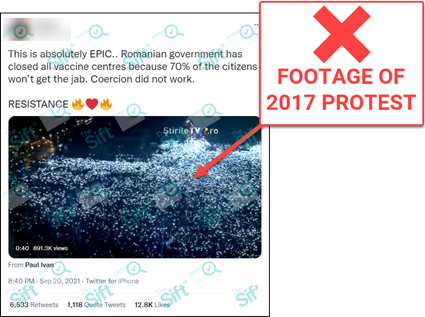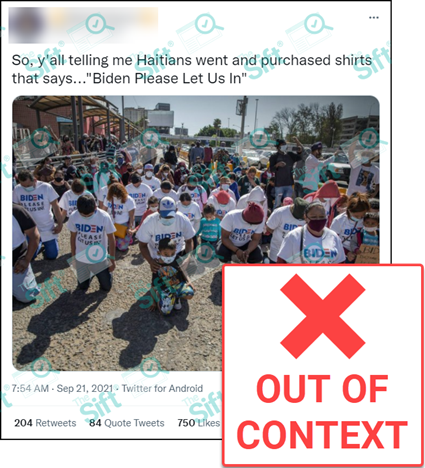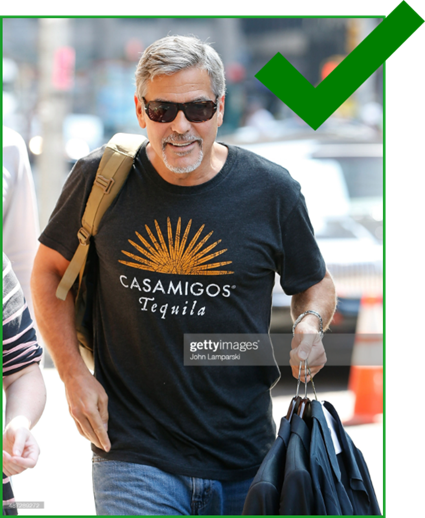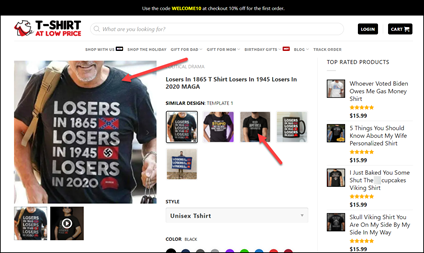
What do you notice about the tweets below? What conclusions can you reach about how information spreads?
 |
 |
(Hint: note the number of quote tweets and retweets)
Questions to Consider (Video 1)
1) Why is it important to know what is true and what is not?
2) What is the Stanford Experiment? What does it tell us?
Watch the video below to learn strategies to INVESTIGATE the source.
John Green has a few ideas to add about finding other coverage a.k.a. lateral research.
Opinion: “Don’t Go Down the Rabbit Hole” (Charlie Warzel, The New York Times).
How can you fact-check what you're reading? Use these tools below!
HOW TO DO A REVERSE VIDEO OR IMAGE SEARCH
Use this infographic to help you figure out whether the news you encounter is credible.
Use Media WIse to locate or add a fact check.
The MediaWise Teen Fact-Checking Network (TFCN) publishes daily fact-checks for teenagers, by teenagers. The program is a verified signatory of the International Fact-Checking Network’s code of principles.
In 2020, the TFCN is focused on fact-checking social media content related to the novel coronavirus. Our team of teen fact-checkers — reporting from more than a dozen states in the U.S. — has published more than 50 fact-checks related to COVID-19 as of May 7.
TFCN fact-checks are unique in that they both debunk misinformation and teach the audience media literacy skills so they can fact-check on their own. On average, 86% of respondents polled on the MediaWise Instagram account recently reported they were more likely to fact-check on their own after watching a TFCN fact-check story.
Follow @MediaWise on Twitter, Instagram, TikTok, Facebook
Source: CommonSense Media (sign in with Clever)

The Spot-The-Troll quiz is an educational tool to help the public learn to spot the markers of inauthenticity in social media accounts. Can you spot a troll?
Source: The Clemson University Media Forensics Hub presents:
Take the quiz to test whether you can sort fact from fiction related to COVID-19 information. The World Health Organization called the deluge of information and misinformation about the pandemic an “infodemic’ for good reason.
The best way for you to help reduce misinformation online is to avoid sharing it. But can you tell the difference between social media posts that are false or misleading and those that are credible?
Source: The News Literacy Project
The Bad News Game puts players in the position of the people who create manipulative news stories, and as such gain insight into the various tactics and methods used by ‘real’ fake news-mongers to spread their message.
Source:DROG (www.aboutbadnews.com),
Can you spot "fake news"? Try Factitious and find out! [Works on Firefox & Chrome only.]
Sources: JoLT & The American University Game Lab
Viral rumor rundown 9/27
Video of protest in Romania is from 2017, unrelated to vaccines

NO: The video in this tweet does not show an anti-vaccine protest in Romania. YES: It shows footage from Televiziunea Română, a Romanian public television network, of anti-corruption protests in Bucharest, Romania, in February 2017.
NewsLit takeaway: Using aerial photos and videos of crowds out of context is a common tactic that trolls and other purveyors of disinformation use to exaggerate grassroots support for a cause or to create confusion.
Resources:
Discuss: Why do you think photos and videos of protests are such common targets for purveyors of misinformation?
Haitian migrants didn’t kneel wearing “Biden please let us in” t-shirts

NO: The photo in this tweet does not show a group of Haitian migrants at the Texas-Mexico border wearing “Biden please let us in” t-shirts in September 2021. YES: It shows a group of migrants at a border crossing at Tijuana and San Diego wearing shirts with the same wording and was taken on March 2, 2021.
NewsLit takeaway: Controversial issues such as immigration commonly engender both disinformation (e.g., photos intentionally taken out of context) and misinformation (e.g., photos mistakenly or inadvertently shared out of context) — though it’s often difficult or impossible to know the motivations behind such posts. In addition to presenting a photo in a false context, this post also appears to imply that migrants were given these shirts as part of a political tactic to damage President Joe Biden. The same conspiratorial questions previously circulated in March.
Resource: “Fact-check it! Misinformation classroom activity” (NLP’s Resource Library).
Actor George Clooney didn’t wear this anti-MAGA t-shirt
![A Facebook post of a photo of the actor George Clooney wearing a t-shirt that reads “Losers in 1865 [next to a Confederate flag], Losers in 1945 [next to a Nazi flag], Losers in 2020 [next to a red MAGA hat].” The News Literacy Project added a 'Doctored Image' label and an inlaid image of Clooney's authentic shirt, which has a tequila logo on it.](https://newslit.org/wp-content/uploads/2021/09/Clooney-FAKE-shirt-425_UPDATED.png)
NO: The actor George Clooney did not wear a shirt that compared MAGA supporters to Confederates and Nazis, calling them all “losers.” YES: The authentic photo of Clooney — which was taken in September 2015, more than five years before the 2020 election — shows that the shirt actually featured a tequila logo. YES: Clooney has been publicly critical of former President Donald Trump in the past.

The original photo — taken on Sept. 8, 2015, in New York City by Getty Images photographer John Lamparski — shows that Clooney actually wore a t-shirt with the Casamigos tequila logo.
NewsLit takeaway: Printed messages, including those on t-shirts, are particularly easy to alter and should always be approached with skepticism — especially when they spark a strong emotion or confirm your biases. Also, it’s helpful to note that many of the provocative t-shirt designs that have been digitally added to celebrity photos can be found for sale online. In this case, not only is the “losers” anti-Trump shirt available for purchase, but one of the webpages features the product using a cropped version of the fake Clooney photo. The same product page features a “Keep America Trumpless” t-shirt that was recently added to a photo of the actor Chris Evans:

Discuss: What might motivate people to digitally add political messages on celebrities’ t-shirts? How could this kind of fake message be harmful? What possible motivation for creating and spreading these false images is tied to the fact that many of these shirts are sold online?
Introducing Lateral Reading before Research
We The Voters | PBS LearningMedia
www.pbslearningmedia.org › collection › wethevoters
Before the 2016 Election, PBS Education partnered with We The Voters, a nonpartisan digital project featuring short films to activate voters across the country.
Omaha Public Schools does not discriminate on the basis of race, color, national origin, religion, sex, marital status, sexual orientation, disability, age, genetic information, citizenship status, or economic status in its programs, activities and employment and provides equal access to the Boy Scouts and other designated youth groups. The following individual has been designated to address inquiries regarding the non-discrimination policies: Superintendent of Schools, 3215 Cuming Street, Omaha, NE 68131 (531-299-9822).
Las Escuelas Públicas de Omaha no discriminan basados en la raza, color, origen nacional, religión, sexo, estado civil, orientación sexual, discapacidad , edad, información genética, estado de ciudadanía, o estado económico, en sus programas, actividades y empleo, y provee acceso equitativo a los “Boy Scouts” y a otros grupos juveniles designados. La siguiente persona ha sido designada para atender estas inquietudes referentes a las pólizas de no discriminación: El Superintendente de las Escuelas, 3215 Cuming Street, Omaha, NE 68131 (531-299-9822).